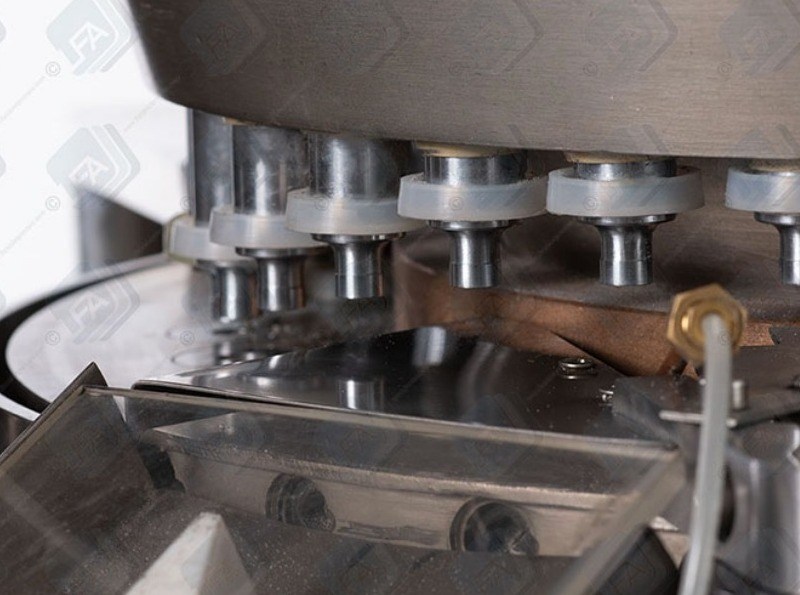Batch manufacturing record or BMR is a document that contains the batch manufacturing details including the entire manufacturing process. As there are several stages in the manufacturing process, these are recorded as proof of the process from receiving the raw materials up to the final phases of packing. The proof and the documents are then attached to the BMR during the manufacturing process.
Articles
Pharmaceutical User Requirement Specification Of Equipment
The URS or User Requirement Specification is a document that contains buyer’s requirements concerning the equipment that they would like to purchase. The Equipment User Department prepares the URS and then sends it to the equipment manufacturer to follow. There are some points to consider when making the URS for pharmaceutical companies.
Oxford Vitality - The Birth & Growth Of A Supplement Company
Over the years at LFA Tablet Presses we have seen our fair share of supplement companies but one of our biggest success by far is Oxford Vitality.
An Overview of Vegetarian Capsules
The advancement in science and technology makes it easier for one to make their own supplements. Vegetarian capsules are healthier as these are derived from natural ingredients such as cellulose, hydroxyl and methyl. If you are looking for a healthy and natural alternative to traditional capsules, then vegetarian capsules can be an excellent choice for you.
Octagonal Blender – Operation and Cleaning Guide
A quick guide to learning how to operate and clean the Octagonal Blender used in the tablet manufacturing industry.
An Overview of Disintegrants
The ability of an active ingredient to be absorbed by the body depends on its bioavailability, which is affected by the active ingredients solubility and absorbency as it passes the gastrointestinal membrane and is subjected to the gastrointestinal fluid. The ability to be absorbed depends on several physical and chemical composition of the drug. That said, the rate in which drugs dissolves depends on the tablet’s disintegration.
Sign Up to Our Newsletter
Multiple Station Tablet Rotary Press
There are 2 types of tablet presses: single-punch and rotary tablet presses. Most high speed tablet presses take the form of a rotating turret that holds any number of punches and dies. As they rotate around the turret, the punches come into contact with cams which control the vertical position of each punch. Tablets produced by a rotary tablet press are compressed into uniform size, shape and weight making it the preferred machine for large-scale manufacture as it also produces more tablets than single punch machines.
Making Tablets - The Right Tools for the job
The concept of producing a tablet form dosage starts first at the company’s marketing department. With that said, the formulators are responsible in producing the said tablet. Below are some key points to consider when specifying the dies and press punches.
Suggest Our Next Article
Can’t find what you are looking for? Let us know and we’ll add it to our article section
Maintaining Buffer Areas In Sterile Facilities
The buffer area is the space or area in the manufacturing facility where sterility of the area is strictly implemented. A compounding area in a pharmaceutical facility is known as the buffer area and is classified as ISO 7 area or class 10,000 with excellent air quality.
Overview Of Lyophilization Of Pharmaceutical Products
There are different products that are classified as parenteral and as some are unstable in solution form, they are being lyophilized. The process helps increase the shelf life of these products. In this article we look at how to best achieve this.
Lubricant Concentration For Pharmaceutical Preparations
To reduce friction during processing, lubricants are added to the formulation of drugs in small batches. There are three reasons why pharmaceutical companies use lubricants.
Protection beyond the packaging (how to keep moisture out of tablets)
There are many factors to be considered in the quest for drug quality assurance.These include environmental moisture, stability and packaging solutions.If all of these aspects are addressed throughout the manufacturing and storage processes, the product can be isolated and protected from all possible threats to quality and efficacy.
Intro to Tableting Part II | Introduction to Tablet Making Part 2
This the second part of our introduction in to the different techniques and terminologies that are used in the industry. We have split this in to two parts as there is so much to cover.
It covers everything from the types of equipment that is used in tablet and capsule making to the techniques used on these machines.
Intro into Tableting Part 1
This is an introduction in to the different techniques and terminologies that are used in the industry. We have split this in to two parts as there is so much to cover.
It covers everything from the types of equipment that is used in tablet and capsule making to the techniques used on these machines.
How To Incorporate Blow Fill Seal and Form Fill Seal Technology
Blow-Fill-Seal (BFS) technology is a manufacturing technique used to produce small, (0.1mL) and large volume, (>500mL) liquid-filled containers. Originally developed in Europe in the 1930s, it was introduced in the United States in the 1960s, but over the last 20 years it has become more prevalent within the pharmaceutical industry and is now widely considered to be the superior form of aseptic processing by various medicine regulatory agencies including the U.S. Food and Drug Administration (FDA) in the packaging of pharmaceutical and healthcare products.
Importance Of Terminal sterilization In Pharmaceutical Industries
Terminal sterilization is the process of sterilizing sterile pharmaceutical products. Small and volume parenteral after the packing of the final products. This process is important as it ensures the sterility of the product.
Important Nutrients Found in Beef
Beef contains a variety of nutrients that are necessary for healthy brain function. Iron, zinc, and B vitamins are vital for fetal brain development. They are important for clear thinking, learning skills, and memory throughout all life stages. Those who are deficient in these nutrients later on in life often suffer with dementia, Alzheimer's disease, and cognitive decline.










